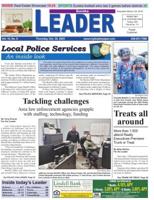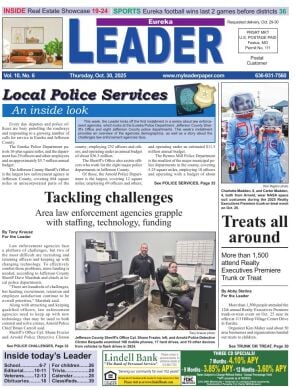
(Photo by Andrea Piacquadio via Pexels)
In the dip of their mattress, on the bed next to their Batman collection and their great-grandmother’s chair are some of America's favorite “spots” around their home, according to new research.
A survey of 2,000 U.S. adults split evenly by generation found that while some prefer to spruce up their favorite spot, such as adding headphones and flip flops to their “hammock in the garden,” others opt for functionality, with one respondent citing their “computer chair, where I can see everything.”
The kitchen counter, a round beanbag chair and their late father-in-law’s recliner are also some of respondents’ favorite lounging locations.
According to the survey, which was commissioned by Stressless furniture and conducted by Talker Research, the average person polled has two different spots around their home that they claim as their own, though 29% of Gen Z and millennials have between three and four different ones.

Terje Sollie
In fact, it’s been an average of four years since they set their sights on their favorite spot, though 17% admit they first staked their claim more than a decade ago.
And this sense of ownership runs deep, as nearly four in five (79%) say that those who live with them know where their spot is. Another 54% would even take grave offense to someone sitting in their spot around the house.
Some even have other rules for their spot, such as not bringing work into that space (19%) or reserving some spot for only the most stressful days (18%).
More than half (52%) would even go so far as to say they consider their favorite spot to be “sacred” or reserved for a specific purpose.
For many, their spot fosters a sense of peace, reserving it to relax or unwind (58%) or for quiet time (41%).
For 40% of Gen Z specifically, their spot is used for self-care or to improve their mental health, while 30% of millennials spend time on their hobbies and passions.

(Photo by Karola G via Pexels)
Seven in 10 of those polled even expressed that when they sit in their favorite spot, they want to treat the moment as if it were wiping their mental and emotional slate clean.
“It’s no secret that Americans are experiencing a stress epidemic, faced with anxiety in just about every aspect of their lives,” said Beverly Kastel, Stressless marketing director for North America. “While it’s refreshing to see that something as simple as a favorite ‘spot’ is helping to wipe away this stress, it’s important to have a space where you’re able to relax and unwind.”
According to the results, Americans are twice as stressed at work as they are in their homes (59% vs. 29%) and another 43% generally feel stressed outside of their home even during mundane tasks such as running errands or visiting restaurants.
And when plans get canceled, two-thirds (67%) feel relieved when they don’t have to leave their home. This was especially true for millennials, with 74% preferring to stay home.

(Photo by cottonbro studio via Pexels)
This may be because nearly three-quarters of those polled (74%) consider themselves a bigger homebody today than ever before.
Eighty-two percent of those polled even consider their home their “sanctuary,” with the average person starting to do so within the last five years.
“While there may not be much you can do about stressors at work or elsewhere, establishing your home as your sanctuary is a sure-fire way to leave that stress at the door,” said Peter Bjerregaard, President of Ekornes, Inc., maker of Stressless. "Your home should be the place that restores your energy, not drains it. When you design your space with spots for comfort and relaxation in mind, you’re not just decorating — you’re investing in your well-being.”

Chris G
Survey methodology:
Talker Research surveyed 2,000 Americans split evenly by generation (500 Gen Z, 500 millennials, 50 Gen X and 500 baby boomers); the survey was commissioned by Stressless and administered and conducted online by Talker Research between Sept. 30 to Oct. 6, 2025.
We are sourcing from a non-probability frame and the two main sources we use are:
- Traditional online access panels — where respondents opt-in to take part in online market research for an incentive
- Programmatic — where respondents are online and are given the option to take part in a survey to receive a virtual incentive usually related to the online activity they are engaging in
Those who did not fit the specified sample were terminated from the survey. As the survey is fielded, dynamic online sampling is used, adjusting targeting to achieve the quotas specified as part of the sampling plan.
Regardless of which sources a respondent came from, they were directed to an Online Survey, where the survey was conducted in English; a link to the questionnaire can be shared upon request. Respondents were awarded points for completing the survey. These points have a small cash-equivalent monetary value.
Cells are only reported on for analysis if they have a minimum of 80 respondents, and statistical significance is calculated at the 95% level. Data is not weighted, but quotas and other parameters are put in place to reach the desired sample.
Interviews are excluded from the final analysis if they failed quality-checking measures. This includes:
- Speeders: Respondents who complete the survey in a time that is quicker than one-third of the median length of interview are disqualified as speeders
- Open ends: All verbatim responses (full open-ended questions as well as other please specify options) are checked for inappropriate or irrelevant text
- Bots: Captcha is enabled on surveys, which allows the research team to identify and disqualify bots
- Duplicates: Survey software has “deduping” based on digital fingerprinting, which ensures nobody is allowed to take the survey more than once
It is worth noting that this survey was only available to individuals with internet access, and the results may not be generalizable to those without internet access.












